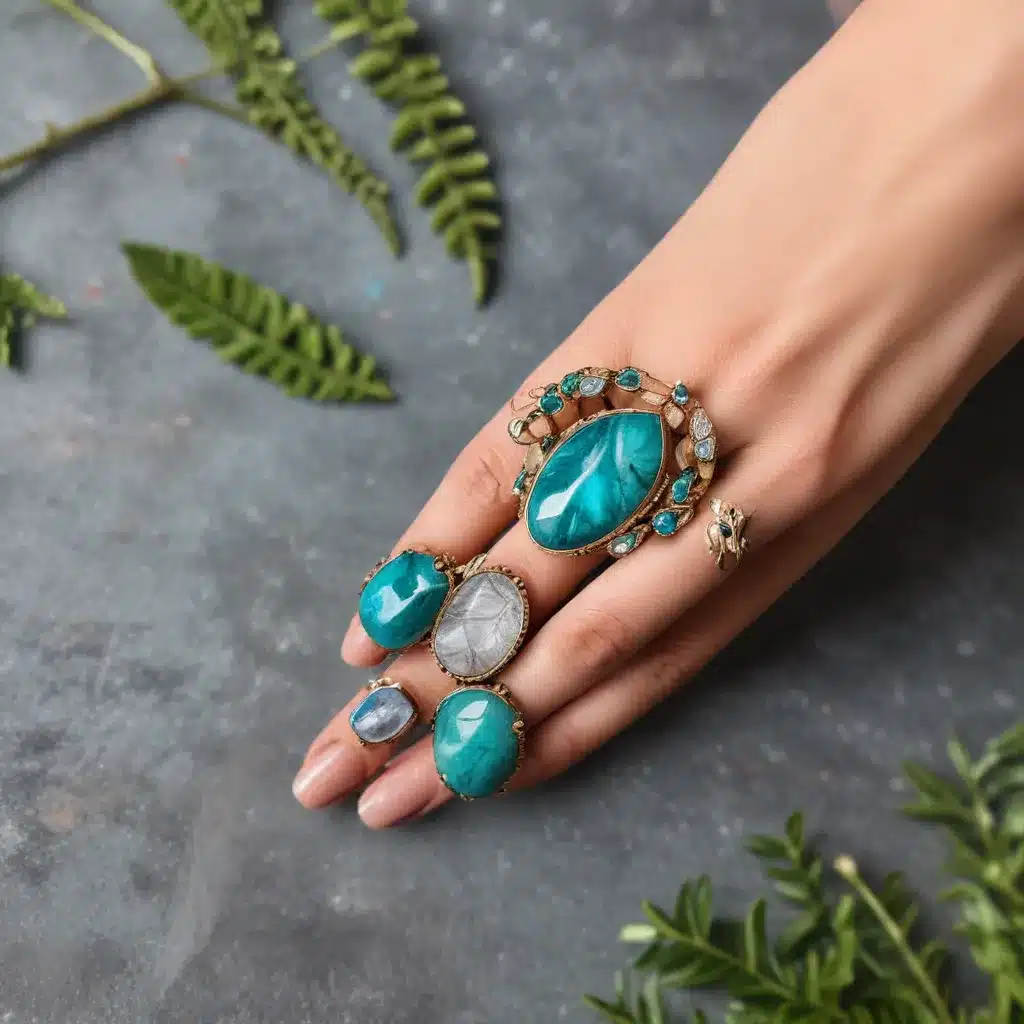
As the world becomes more conscious of its environmental impact, the jewelry industry is undergoing a profound transformation. Consumers, particularly millennials and Gen Z, are now demanding that their accessories not only dazzle but also uphold sustainable and ethical principles. This shift in consumer preferences has catalyzed a wave of innovation within the jewelry design landscape, as brands strive to meet the growing demand for eco-friendly and socially responsible adornments.
Defining Sustainable and Ethical Practices
At the heart of this shift lies a commitment to environmentally-conscious materials, fair trade and ethical sourcing, and responsible production processes. Designers are increasingly turning to recycled metals, organic gemstones, and lab-grown diamonds to create their collections, drastically reducing the demand for newly mined resources that often have a hefty environmental footprint. Additionally, brands are placing a stronger emphasis on transparency, ensuring that their supply chains are free from unethical labor practices and that the communities from which they source their materials are empowered and compensated fairly.
Shifting Consumer Preferences
This trend towards sustainable and ethical jewelry is driven by a growing awareness among consumers of the impact their purchasing decisions can have on the planet and the people involved in the production process. Shoppers are now more inclined to research a brand’s sourcing and manufacturing methods, seeking out companies that align with their values. The rise of ethical consumerism has put pressure on the jewelry industry to adapt, with brands that fail to adopt sustainable practices risking losing market relevance.
Sustainable Jewelry Materials
One of the most significant developments in the sustainable jewelry movement is the embracing of natural and renewable resources. Recycled metals, such as gold and silver, have become increasingly popular, as they reduce the need for newly mined ore and minimize the environmental impact associated with extraction. Organic gemstones, including ethically sourced diamonds, lab-grown diamonds, and synthetic gemstones like moissanite and cubic zirconia, offer a more sustainable alternative to traditional mined stones.
Lab-Grown Alternatives
The emergence of lab-grown diamonds and synthetic gemstones has disrupted the traditional jewelry market, providing consumers with a more ethical and environmentally-friendly choice. These cultured diamonds and lab-grown gems are chemically and physically identical to their natural counterparts, but their production process is far less resource-intensive and often more transparent. Brands that have embraced these innovative materials are able to offer their customers luxury jewelry at a more accessible price point, while also minimizing their environmental impact.
Certifications and Standards
To ensure the integrity of sustainable and ethical jewelry, various certification schemes and industry standards have been established. Organizations like the Responsible Jewelry Council, Fairmined, and Fairtrade have developed guidelines and verification processes to ensure that materials are sourced responsibly and that labor practices adhere to ethical principles. Additionally, the use of blockchain technology is enabling greater traceability within the supply chain, allowing consumers to trace the provenance of their jewelry purchases.
Ethical Sourcing and Production
Responsible mining practices are a crucial aspect of sustainable jewelry. Artisanal and small-scale mining operations, which often involve local communities, are gaining traction as an alternative to large-scale industrial mining. These efforts prioritize environmental impact mitigation, fair labor practices, and community engagement, ensuring that the benefits of the jewelry trade are shared equitably.
Ethical Labor Practices
Beyond the sourcing of materials, the jewelry industry is also addressing the issue of ethical labor practices. Brands are committing to ensuring living wages, safe working conditions, and the elimination of child and forced labor within their supply chains. By empowering workers and fostering transparency, these companies are creating a more ethical and inclusive industry.
Transparency in the Supply Chain
Traceability and transparency are key pillars of sustainable jewelry. Brands are now disclosing the provenance of their materials, enabling consumers to make informed choices about the origins of their purchases. Third-party auditing and verification processes are also being implemented to ensure the integrity of these claims, further strengthening the trust between brands and their customers.
Embracing Circular Economy Principles
The shift towards sustainability in the jewelry industry also encompasses the principles of a circular economy, which aims to minimize waste and maximize the lifespan of products. Jewelry takeback programs, the repurposing of vintage pieces, and innovative recycling technologies are all contributing to a more sustainable future for the industry.
Recycling and Upcycling
By encouraging the recycling and upcycling of jewelry, brands are able to reduce the demand for newly mined resources and extend the useful life of existing materials. This not only reduces waste but also allows consumers to play a more active role in the sustainability of their accessories.
Extending Product Lifespan
Alongside recycling efforts, the jewelry industry is also exploring ways to extend the lifespan of its products. Durable and repairable designs, as well as modular and customizable pieces, empower customers to cherish their jewelry for years to come, minimizing the need for frequent replacement.
As the jewelry industry continues to evolve, the embrace of sustainable and ethical practices will be a defining factor in its future success. By prioritizing environmentally-conscious materials, fair labor practices, and circular economy principles, brands are not only meeting the demands of their increasingly conscious customers but also paving the way for a more responsible and innovative future in the world of adornment. The sparkling world of jewelry is undergoing a remarkable transformation, one that promises to leave a lasting and positive impact on both the planet and the people who wear these exquisite creations.

